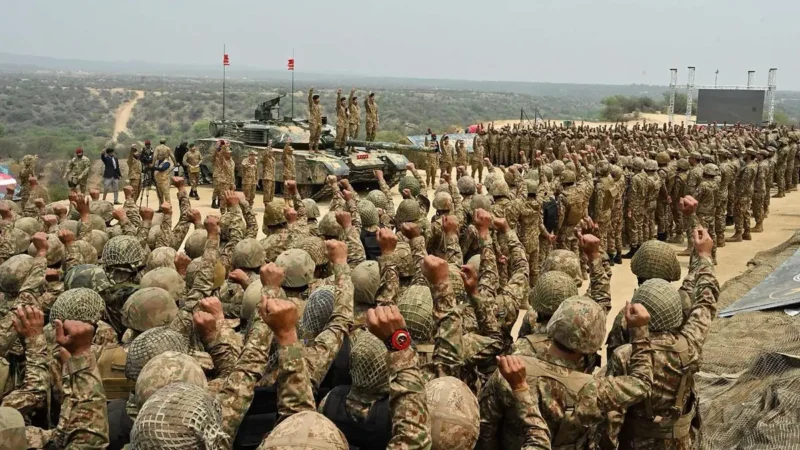Pakistan’s numerous tug-of-wars and the current round of terror assaults
The string of terrorist attacks in J&K merits a widening of the frame to look at what is happening in Pakistan. The announcement that a ban on the Pakistan Tehreek-e-Insaf (PTI) and trying Imran Khan for treason was being contemplated turned out to be more revelatory of Pakistan’s politics than having any actual impact. There was quick backtracking, with clarifications that allies and supporters of the govt will be consulted first.
In any event, it is unclear whether the Supreme Court would have permitted such moves unchallenged. The announcement itself followed and was evidently provoked by a Supreme Court split judgment in which the majority held that PTI was entitled to its share of reserved members of the national assembly (for women and minorities). The judgment also recognised PTI as a legal political party, ending the ambiguity surrounding it since the February 2024 general election when it was disallowed use of its election symbol, and its candidates had to contest as independents.
With its quota of reserved members and its recognition as a parliamentary party, PTI is now the single largest party. This change too will have no immediate impact on the Shehbaz Sharif govt although it will no longer command a two-thirds majority in the national assembly.
The Supreme Court judgment is, however, revelatory of how the judiciary often acts as an independent player in Pakistan politics and in ways not consistent with its general reputation, and history of playing to the military’s tune. With the term of the current chief justice drawing to a close, it is clearly being pulled in different directions. There have been over the past few months steady reports of judges complaining of pressure being bought by intelligence agencies or the military. The present judgment is as much against the interests of the Pakistan military, and especially its current chief General Asim Munir, as it is disliked by the Pakistan Muslim League (Nawaz) led by the Sharif brothers or even the Pakistan Peoples Party (PPP). Much as all political parties mine a latent anti-military sentiment amongst the public, so does the judiciary and this sentiment is strong in different bar councils and associations.
So how should we read this latest turn in Pakistan’s politics? An overview would be that a peculiar characteristic of Pakistan’s politics is that its contradictions and tensions are multidirectional. No one single dynamic captures the situation. Alongside PTI vs Pakistan military axis, there is PTI vs PML (N) and PPP combine. Another emergent contradiction which we may see more of in the coming months is that between the judiciary and the military. There are less dramatic tensions between those presently on the same side — Army vs PML(N) and between PPP and PML(N).
All this gives rise to different tactical plays. The broader context is sombre. The economic situation is a deep black hole. The IMF package provides some oxygen but its conditionalities will provide more kindling to political and social conflict. The security situation is equally demoralising with constant attacks by TTP, and no solution in sight with Pakistan’s relationship with the Taliban in Afghanistan, having gone seriously south. There is an overbearing military seeking to address all this simultaneously but stuffing the paste back into so many tubes is just not working. The larger takeaway also is that the military’s capacities to manage Pakistan’s internal issues appear somewhat degraded.
Would a Pakistan faced with such grave challenges risk an aggravation of the situation with India which the continued terrorist attacks in J&K suggests? Given the situation on its western borders with Afghanistan a quiet India-Pakistan border and LoC seems to be in its interest. This, in fact, has been the logic behind the upholding of the ceasefire since 2021 notwithstanding the downturn in India-China relations.
There is, however, an alternative and equally compelling reading possible. It is not a leap of faith to imagine that Pakistan’s assessment of India’s mood since 2019 is that it is complacent about J&K and also so with regard to Pakistan. It may well be Pakistan’s view that this mood needs to be checked, and a calibrated increase in security incidents provides the means to do so.
These two constructs are not mutually exclusive, and it is not for the first time that we may have to deal with two mutually opposing realities when it comes to Pakistan. The point is that our policy has to rise above the day-to-day and the tactical and anchor itself on all our strengths — economic and diplomatic — and resist the temptation that sees attributes of hard power as the only instruments available.





